Many homeowners never give their home’s insulation a second thought. What’s there to think about? You know your home has insulation and that insulation is serving its purpose (whatever that may be.) Many of us never stop to consider how well the insulation is serving that purpose or even exactly what the purpose of insulation is. It’s a little known fact that the quality of a home’s insulation plays a key factor in the comfort, safety, and even cost of a home. Proper insulation, or lack thereof, can truly make or break your experience living within your home.
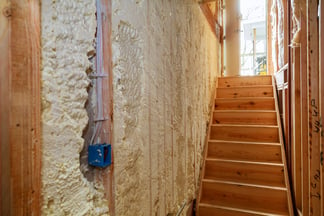
What is home insulation?
Before discussing the benefits of a well-insulated home, it’s important to understand what insulation is. According to Energy.gov, insulation is generally defined as any type of material that provides a barrier between a home’s walls, ceilings, or floors and serves to control temperature and noise. Homes may contain a variety of different insulation materials, all offering their own set of benefits and drawbacks. Three of the more common types of insulation materials include foam, fiberglass, and cellulose.
Foam insulation offers material in two forms: spray foam or injection foam. Spray foam is sprayed directly into open cavities in a home, often in new construction homes, crawl spaces, attics, etc. Spray foam is liquid when applied and expands to fill the cavity it was sprayed into. Injection foam, on the other hand, is pumped into existing cavities like in an older home’s walls and fills the empty space. Injection foam does not expand or lose shape.
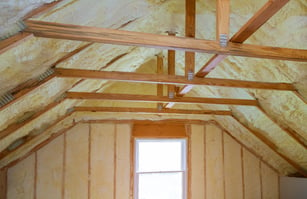 Foam Insulation
Foam Insulation
Fiberglass insulation comes in fluffy bats and rolls made of plastic reinforced by tiny glass fibers. One of the more prevalent and recognizable insulations, fiberglass insulation, can be used in a multitude of areas within a home, including walls, floors, ceilings, and even ducts. This material is generally considered to be a cost-effective insulation solution.
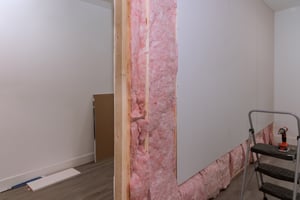 Fiberglass Insulation
Fiberglass Insulation
Cellulose insulation is a fiber insulation used predominantly in existing walls, open new walls, and unfinished attic floors. This material is a loose fibrous insulation that is made up of up to 85% recycled paper or wood products. Because of its loose shape, cellulose insulation can be used to insulate a variety of areas within a home that may be otherwise difficult to insulate with other materials.
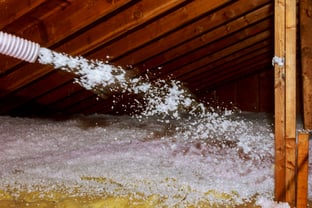 Cellulose Insulation
Cellulose Insulation
Most insulations can last decades in a properly maintained home; however, outside factors may degrade insulation over time and make it less effective.
What are some benefits of Cellulose insulation?
Comfort - Of course, the most obvious benefit to a well-insulated home is protection from escaping heated or cooled air. A properly insulated home will stay warmer during the winter and cooler in the summer due to its ability to keep inside air in and outside air out. Homes with quality and sufficient insulation will be comfortable to live in year-round as they remain more temperature-controlled than a drafty house.
Noise reduction - Another benefit to a well-insulated home is noise reduction. Insulation provides a barrier to noise both inside and outside the home - meaning you hear less of what’s going on outside, and outside hears less of what’s going on inside. Insulation’s noise dampening effects are especially noticeable to those who live near busy roads, in bustling cities, or even in densely packed neighborhoods where homes are situated very close together. Ask anyone with a sleeping baby and a neighbor mowing their lawn - insulation’s ability to reduce noise is important!
Lower energy costs - Homeowners with homes that are properly insulated can expect lower energy costs, as well. Houses that have failing insulation, not enough insulation, or air leaks may have energy bills up to 15% higher than a well-insulated home. Poor insulation can also cause additional wear and tear on a home’s heating and cooling units, causing premature system failure.
Resale value - According to the US Green Building Council, homes with upgraded insulation sell for an average of 8% more than homes that are less efficient. It’s also been shown that energy-efficient upgrades (such as insulation) are some of the best home improvements you can make for your home’s resale value. As of 2022, homes that are labeled as “energy-efficient” receive preference for new homebuyers.
Keep pests out - A lesser known benefit to quality home insulation is its use as a pest prevention measure. Spray foam can be an excellent line of defense against pests due to its ability to expand and fill even the smallest of cracks and spaces, preventing insects from making entry. Densely packed cellulose insulation can be another successful hindrance to pests as it is difficult for pests to push through and allows for very little air flow. Common entry points for pests, such as the attic, crawl space, or basement, are also common areas where insulation can be applied.
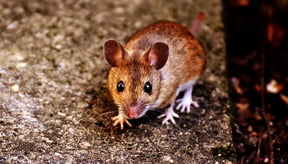
Can pests damage my home’s insulation?
Though some insulation types can be great at keeping pests out, there are instances in which pests can make their way into your home’s insulation. Older failing insulation, sagging fiberglass insulation, and even improperly applied foam or cellulose insulation are all at risk of pest damage. Mice and other rodents are known to use home insulation in their nests, or worse, nesting inside a home’s insulation itself. This can cause a few different issues.
Rodents can easily destroy insulation in their efforts to make a suitable nest. By chewing, tearing, and even consuming insulation, rodents can cause enough damage to render the insulation useless. In such cases, insulation often needs to be completely removed and the home reinsulated to ensure it is properly protected. But physical damage to the insulation itself isn’t the only concern when pests are involved.
The presence of rodents in your attic insulation can also be a significant biohazard. Mouse excrement is known to carry a variety of diseases, bacteria, viruses, and parasites that can make humans ill. Small, dried particles of mouse urine or droppings can be released into the air you breathe, making you sick or serving as a catalyst to an allergic reaction. Areas that are or have been affected by rodent activity must be handled with great care, ideally by a professional.
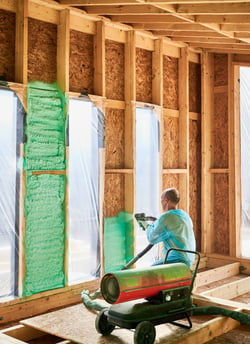
Is there insulation that protects against insects?
Yes! EcoShield's Insulation Shield offers unique cellulose insulation that protects against invading insects. We'll insulate your attic and crawl spaces to decrease energy bills while also keeping the pests away.
Our insulation kills cockroaches, silverfish, ants, termites, and many other crawling insects. In addition, it improves the thermal and acoustic properties of your home, reducing your energy bills and making your home more comfortable for you and your family.
Whether you're replacing old insulation, adding extra insulation to your existing home, or insulating a brand-new home, we're ready to help you reduce your heating and cooling bills.
BENEFITS OF THE INSULATION SHIELD SERVICE:
- Cleaner, more efficiently heated, and cooled home.
- High-performance attic insulation that also protects against pests.
- Insulation Shield saves you money and keeps your heating and cooling bills from skyrocketing!
- Reduced wear and tear on heating/cooling systems.
- Increased property value.
- Absorbs sound! Pest control insulation creates a barrier that will help reduce outside noise, such as busy roads and dogs barking from disturbing you indoors. It can also reduce noises from traveling within your home, such as loud music or the toilet flushing.
What should I do if my home’s insulation is insufficient or needs repair?
It’s important that you contact a trusted professional for any kind of home insulation needs. We advise against DIY insulation work as certain kinds of materials used may pose health hazards if proper safety measures aren’t taken. EcoShield’s insulation experts are trained in the necessary safety protocols to ensure the safety of you and your family. Whether you're replacing old insulation, adding extra insulation to your existing home, or insulating a brand new home, consider pest control Insulation Shield from EcoShield.